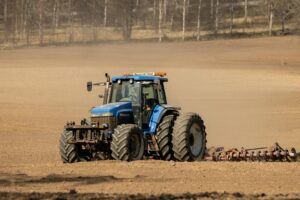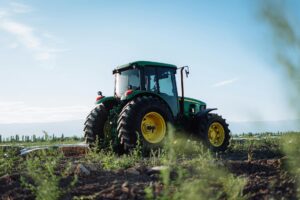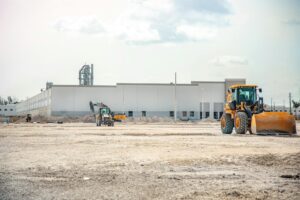Ford has been a legendary name in the agricultural machinery world for over a century. Known for durability, simplicity, and innovative engineering, Ford tractor models have shaped farming practices across the globe. From their early 1910s designs to modern New Holland partnerships, Ford tractors have consistently delivered reliability and performance.
In this guide, we will explore the history of Ford tractors, provide a detailed list of Ford tractor models by year, examine old Ford tractor models that are now classics, and highlight small Ford tractor models perfect for specialized farming and property maintenance.
The History of Ford Tractor Models
Ford Motor Company entered the tractor market in 1917 with the Fordson Model F, one of the first mass-produced tractors in the world. Henry Ford’s vision was to make farming more efficient and affordable for everyday farmers. Over the decades, Ford produced tractors in various sizes and configurations, catering to different agricultural needs.
Key milestones in Ford tractor history include:
-
1917: Launch of the Fordson Model F
-
1939: Introduction of the iconic Ford 9N with the 3-point hitch system (developed with Harry Ferguson)
-
1950s–60s: Expansion into multiple horsepower ranges
-
1970s–80s: Global distribution and technological upgrades
-
1991: Ford’s agricultural division merges with New Holland, ending pure “Ford” branding on tractors
Ford Tractor Models by Year
Tracking Ford tractor models by year gives insight into their technological evolution and changing designs.
1910s–1920s: The Early Fordson Era
-
1917–1928 Fordson Model F – Revolutionary mass-produced tractor
-
1929–1932 Fordson Model N – Improved cooling and engine performance
1930s–1940s: Ferguson Partnership and Innovation
-
1939–1942 Ford 9N – Famous for the 3-point hitch system
-
1942–1947 Ford 2N – War-time variant with simplified materials
-
1947–1952 Ford 8N – Improved transmission and rear hydraulics
1950s: Expanding Model Lineup
-
1953–1954 Golden Jubilee NAA – Commemorated Ford’s 50th anniversary
-
1955–1957 Ford 600 and 800 Series – Enhanced horsepower and gearing
-
1957–1962 Ford 601, 801, and 901 Series – Multiple configurations for different farming tasks
1960s: International Growth
-
1962–1964 Ford 2000, 4000, 6000 Series – Improved hydraulics and styling
-
1965–1975 Ford Thousand Series (e.g., 3000, 5000, 7000) – Durable and globally popular
1970s–1980s: Heavy-Duty Workhorses
-
1975–1981 Ford 2600, 3600, 4600, 5600, 6600, 7600, 8600 – Diverse power ranges
-
1981–1989 Ford TW Series – Large-scale farming tractors with turbocharged engines
-
1980s Ford 7710, 7810, 8210 – High horsepower with modern comfort
1990s: Transition to New Holland
-
1990–1991 Ford 4630, 5030, 8630 – Final Ford-branded tractors
-
Post-1991: Models rebranded under New Holland but retained Ford engineering
Old Ford Tractor Models
Many farmers and collectors seek old Ford tractor models for their simplicity, durability, and historical value. These models are prized for restoration projects and light farm work.
Popular Old Ford Tractors
-
Fordson Model F (1917–1928) – The tractor that started it all
-
Ford 8N (1947–1952) – Perhaps the most famous Ford tractor ever made
-
Ford Golden Jubilee NAA (1953–1954) – Collector favorite for its unique styling
-
Ford 5000 Series (1965–1975) – A reliable mid-sized workhorse
-
Ford TW-20 (1979–1983) – Known for power and durability in large-scale farming
Why Farmers Still Love Old Ford Tractors
-
Mechanical simplicity – Easy to repair without complex electronics
-
Long lifespan – Many still run after 50+ years
-
Affordable parts – Widespread availability of replacements
-
Versatility – Suitable for plowing, mowing, and light hauling
Small Ford Tractor Models
For homeowners, small-acreage farmers, and specialty crop producers, small Ford tractor models provide just the right balance of power and maneuverability.
Popular Small Ford Tractor Models
-
Ford 9N and 2N – Early compact tractors with versatile use
-
Ford 2000 Series – Great for mowing, small plowing jobs, and garden work
-
Ford 3000 Series – Compact yet capable for orchard and vineyard work
-
Ford 1710 & 1910 (Compact Utility Tractors) – Ideal for landscaping and light farm duties
Benefits of Small Ford Tractors
-
Easy to handle in tight spaces
-
Fuel-efficient operation
-
Lower maintenance costs
-
Perfect for hobby farms, vineyards, and estate management
How to Identify Ford Tractor Models
Ford tractors can be identified by:
-
Model numbers on the chassis
-
Serial number plates (usually under the hood or near the engine)
-
Distinctive styling cues for different eras
-
Color schemes – Early Fordsons were gray, post-1939 models often blue and gray
Buying a Ford Tractor: New vs. Used
When shopping for a Ford tractor, consider:
-
Intended use – Large-scale farming vs. small property maintenance
-
Horsepower needs
-
Availability of parts and service
-
Condition of engine, hydraulics, and tires
Used Old Models: Perfect for collectors or small farms with limited needs. Newer Ford/New Holland Models: Better suited for intensive farming with modern features.
Maintenance Tips for Ford Tractor Owners
To keep your Ford tractor in top shape:
-
Change oil and filters regularly
-
Keep hydraulic fluid topped up
-
Store in a dry location to prevent rust
-
Grease moving parts to reduce wear
-
Inspect belts, hoses, and tires frequently
The Legacy of Ford Tractor Models
From the first Fordson to the last Ford-branded machines before merging with New Holland, Ford tractor models have left an indelible mark on agricultural history. Whether you’re a farmer looking for dependable machinery, a hobbyist searching for a small Ford tractor, or a collector of old Ford tractor models, there is a Ford tractor that fits your needs.
The combination of simplicity, reliability, and innovation ensures that Ford tractors—old and new—will continue to work the fields and charm enthusiasts for decades to come.
Frequently Asked Questions (FAQ) About Ford Tractor Models
1. What are the most popular Ford tractor models? Some of the most popular Ford tractor models include the Ford 8N, Ford 3000, Ford 5000, Fordson Model F, and Ford 7710. These models are known for their reliability, ease of maintenance, and versatility in different farming conditions.
2. How can I find Ford tractor models by year? You can find Ford tractor models by year through historical production charts, Ford tractor manuals, and online databases. Serial numbers located on the tractor’s chassis or engine can also help identify the exact year of manufacture.
3. Which old Ford tractor models are considered collectible? Collectible old Ford tractor models include the Fordson Model F (1917–1928), Ford 9N (1939–1942), Ford 8N (1947–1952), and the Ford Golden Jubilee NAA (1953–1954). These models are sought after by collectors for their historical value and classic design.
4. Are small Ford tractor models still available? Yes, small Ford tractor models such as the Ford 2000, Ford 3000, and compact utility tractors like the Ford 1710 and 1910 can still be found in the used market. While Ford no longer manufactures tractors under its own name, many of these small models remain in use today.
5. What is the difference between the Ford 8N and the Ford 9N? The Ford 8N (1947–1952) was an upgraded version of the Ford 9N (1939–1942). The 8N featured a four-speed transmission, improved hydraulics, and a red-and-gray paint scheme, while the 9N had a three-speed transmission and was painted gray.
6. Who makes Ford tractors now? In 1991, Ford’s agricultural division merged with New Holland, and tractor production continued under the New Holland brand. Although Ford-branded tractors are no longer produced, many of their designs and engineering features live on in New Holland models.
7. Are parts available for old Ford tractor models? Yes, parts for old Ford tractor models are widely available through aftermarket suppliers, tractor salvage yards, and specialized online stores. Some parts are even reproduced to original specifications.
8. How do I maintain an old Ford tractor? Maintenance for old Ford tractors includes regular oil changes, checking and topping up hydraulic fluid, greasing moving parts, replacing worn belts and hoses, and storing the tractor in a dry location to prevent rust.
9. Can I still use an old Ford tractor for farming today? Absolutely. Many old Ford tractors are still in active use on small farms, ranches, and hobby properties. While they may not have the advanced features of modern tractors, their durability and ease of repair make them reliable workhorses.
10. Where can I buy a Ford tractor? You can find Ford tractors through farm equipment dealerships, online marketplaces like TractorHouse and eBay, farm auctions, and local classified ads. Always inspect the tractor in person before purchasing, if possible.




Pingback: Ford Tractor Parts: Complete Guide For Maintenance, Repairs, And Restoration
Pingback: Ford Farm Tractors Sorted By Model